Sherman Gardens In Corona Del Mar 7/8/2015
In Town Escape From The Pressures Of Living!
A Quick Walk In The Gardens 7/8/2015
We were doing errands and all of a sudden Sue says "Lets walk through Sherman Gardens". Well, that is to Paul like rattling car keys to a dog! We immediately head down the coast to Corona Del Mar and within 12 minutes we are in paradise!
Sherman Library & Gardens is a 2.2 acre Corona del Mar horticultural retreat. The Gardens provide a museum of living plants, displayed amidst a setting of immaculate gardens, patios and conservatories linked together by wide brick walkways, beds blooming with seasonal flowers and bubbling tile fountains.


It's a small put interesting garden!

We entered through the rear entrance... Next to parking lot!

They had a special going on from May until August!
We Enter At The Central Garden

The fountains are always pleasing to listen too and see

The statue is at least ten feel tall
Into The Desert We Go!

Easy to water!
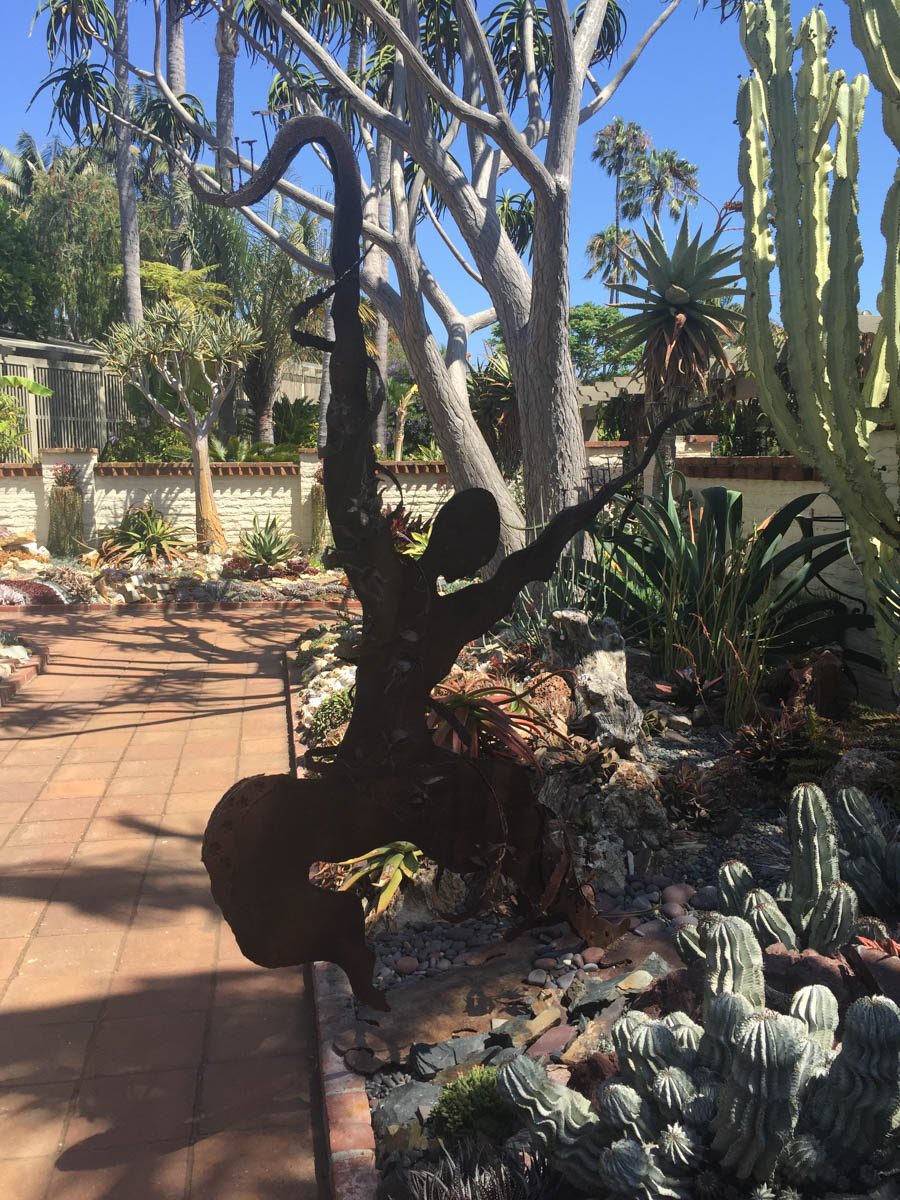
Love the sculpture
Did You Know? - Sculpture is the branch of the visual arts that operates in three dimensions. It is one of the plastic arts.
Durable sculptural processes originally used carving (the removal of material) and modelling (the addition of material, as clay), in stone, metal, ceramics, wood and other materials but, since modernism, shifts in sculptural process led to an almost complete freedom of materials and process.
A wide variety of materials may be worked by removal such as carving, assembled by welding or modelling, or molded, or cast.
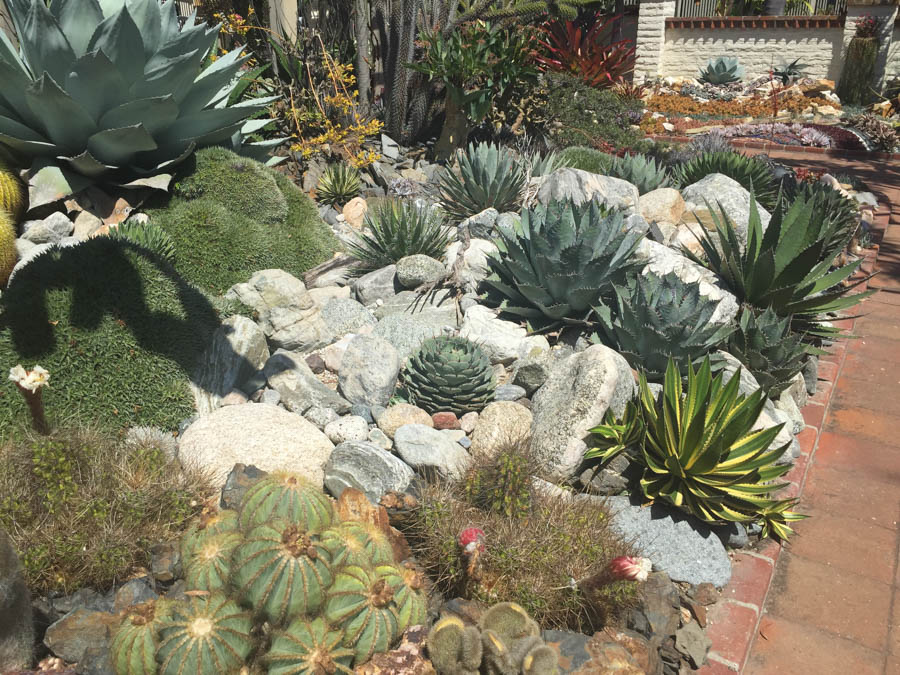
The sun was bright and the cacti stood at attention as we passed by
Into The Hanging Gardens
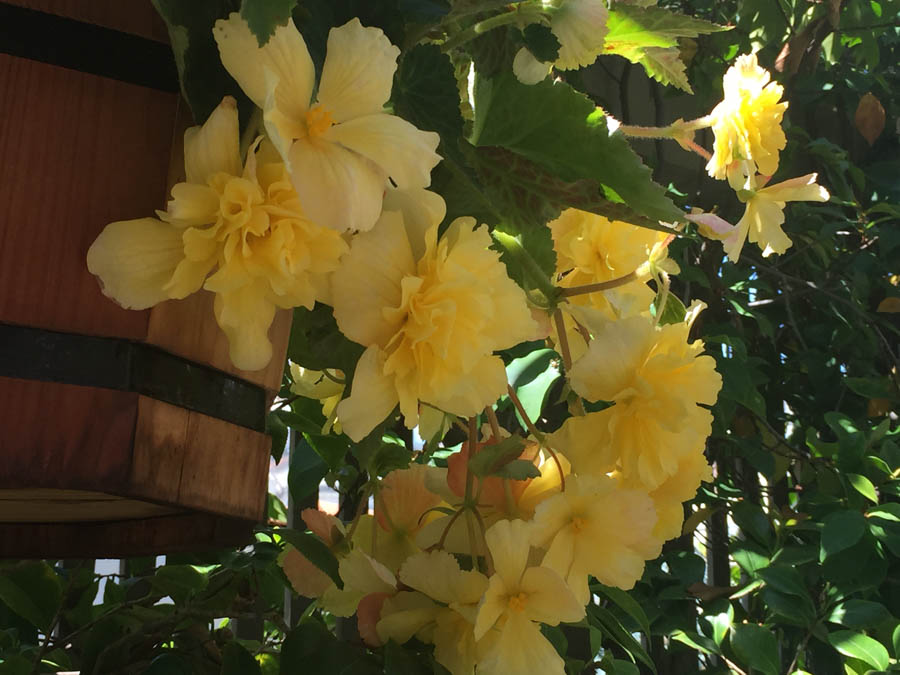
Magnificent yellows

Beautiful tropical plants... Anthurium
Did You Know? - The genus is native to the Americas, where it is distributed from northern Mexico to northern Argentina and parts of the Caribbean.

The garden borders were beautiful

Red anyone?
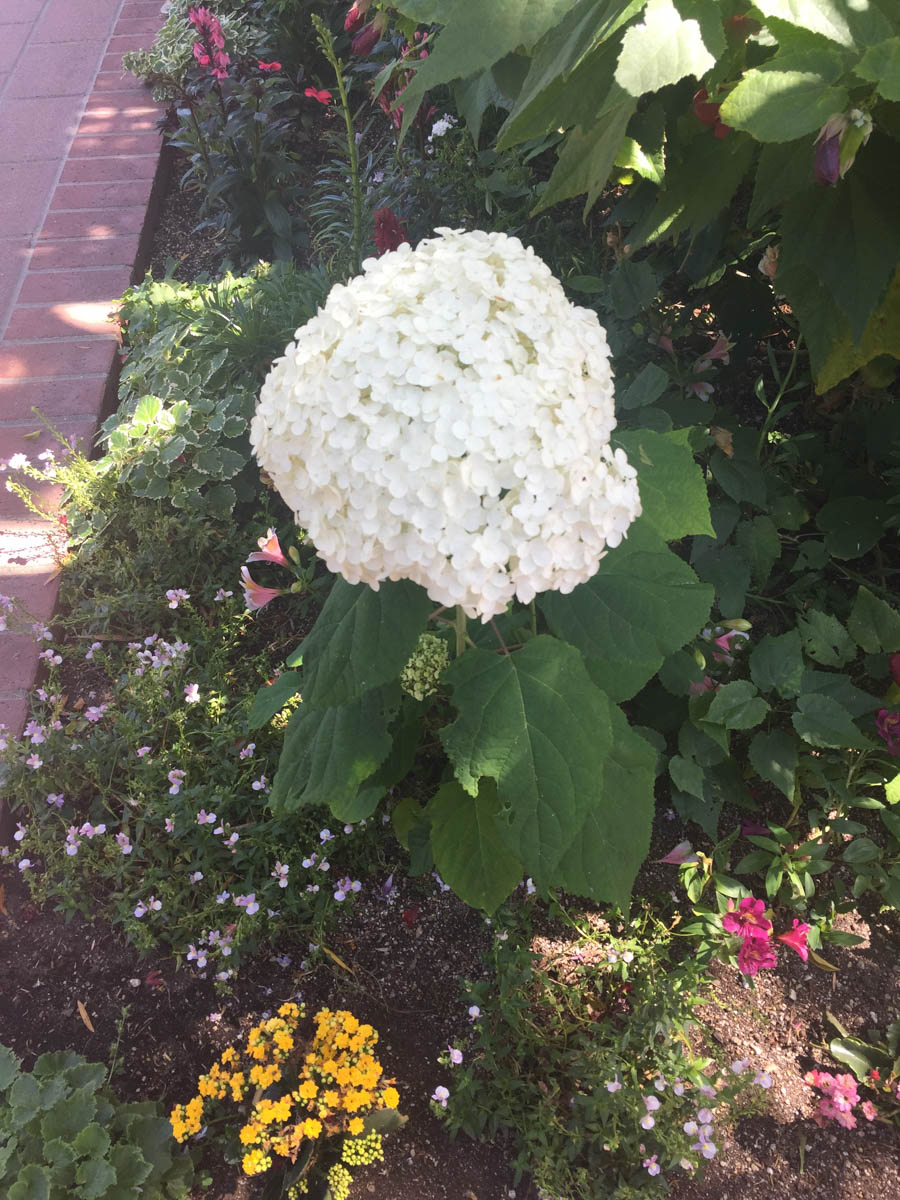
The white hydrangea stood right out amongst its colored neighbors
Did You Know? - Hydrangea (common names hydrangea or hortensia) is a genus of 70–75 species of flowering plants native to southern and eastern Asia (China, Japan, Korea, the Himalayas, and Indonesia) and the Americas.
By far the greatest species diversity is in eastern Asia, notably China, Japan, and Korea. Most are shrubs 1 to 3 meters tall, but some are small trees, and others lianas reaching up to 30 m (98 ft) by climbing up trees.
They can be either deciduous or evergreen, though the widely cultivated temperate species are all deciduous.
To The Roses And Lilly Pads
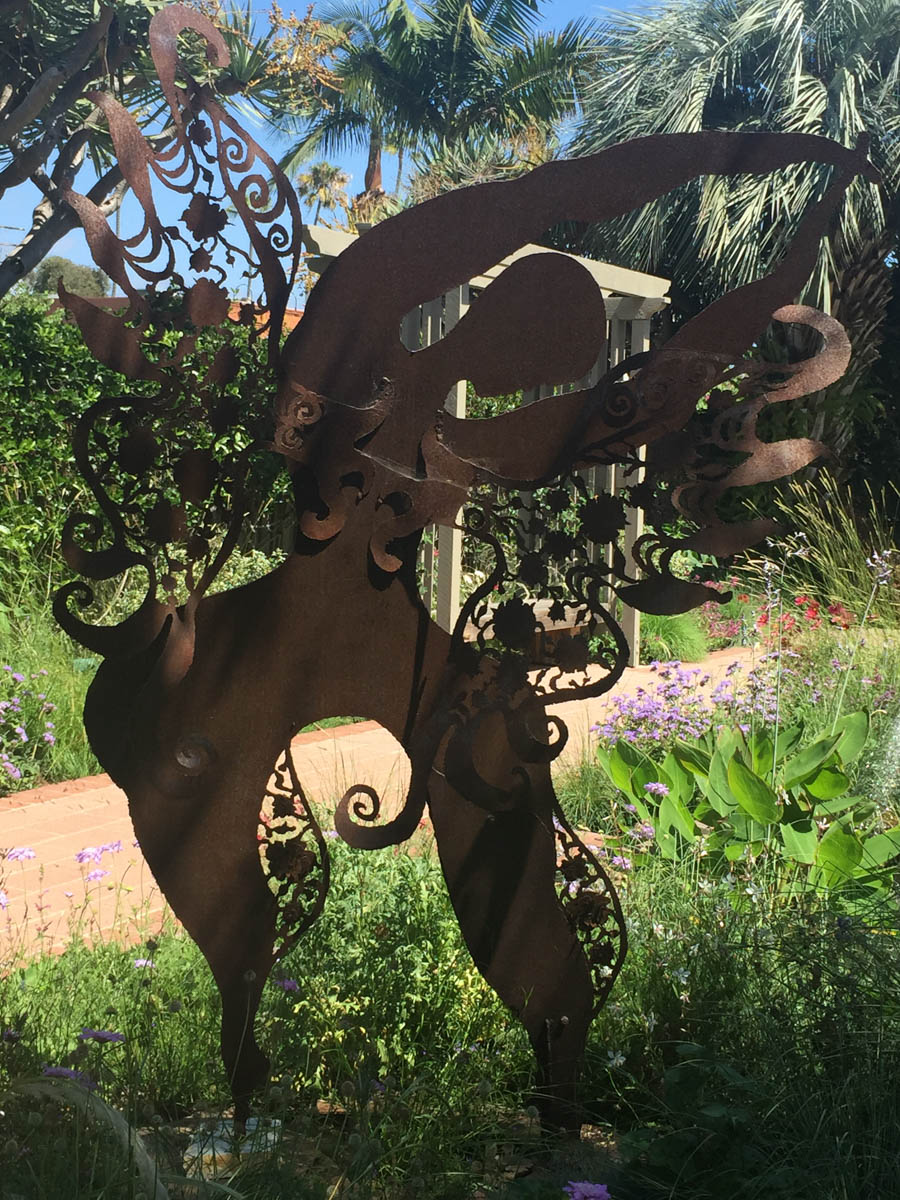
Interesting sculptures
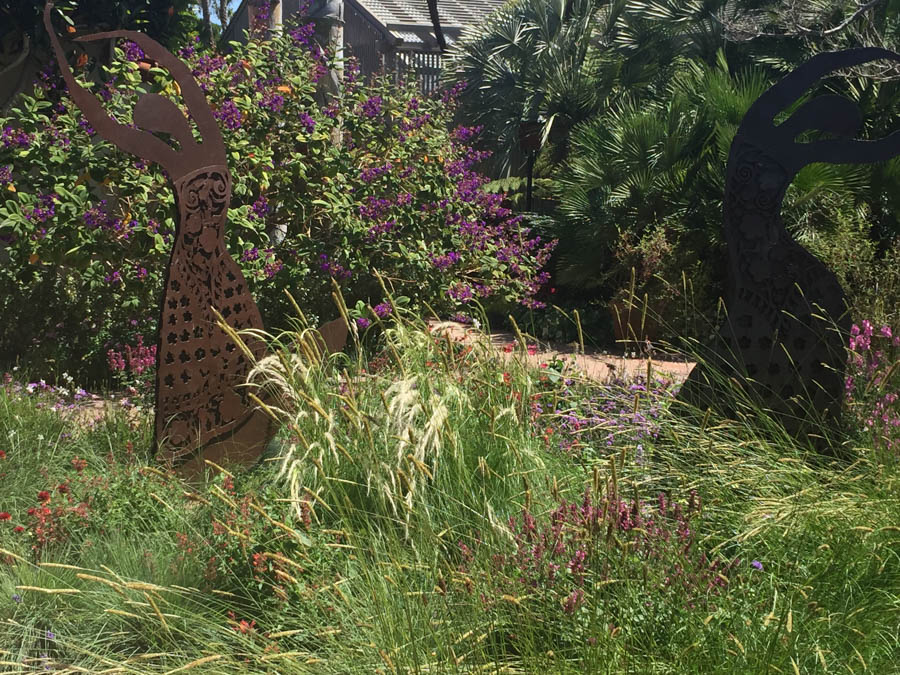
The lady was in the bushes
Visiting The Turtles

Mr. Turtle was out and about today
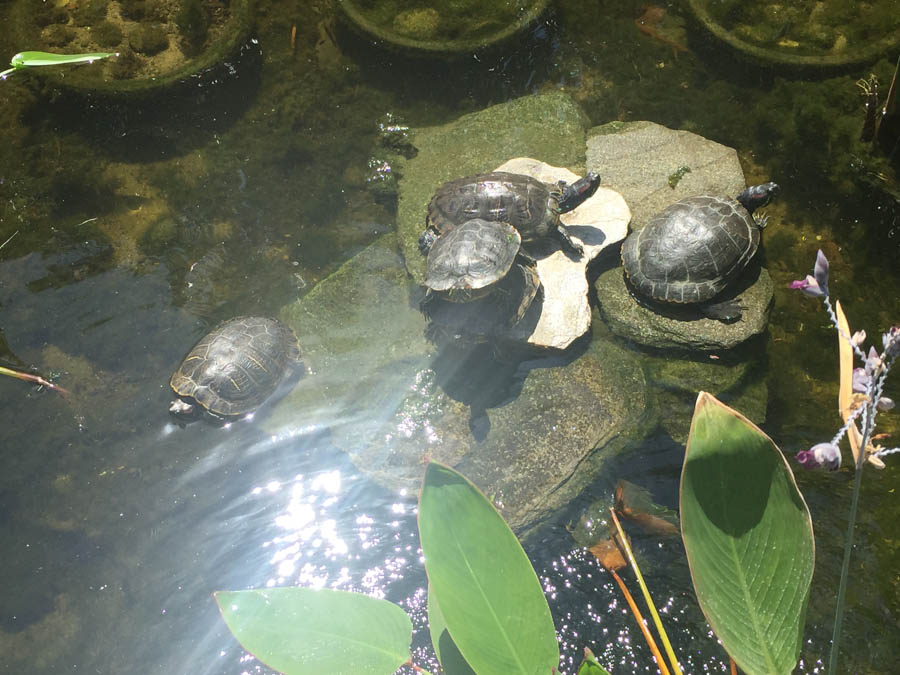
We sent this photo to Charlotte
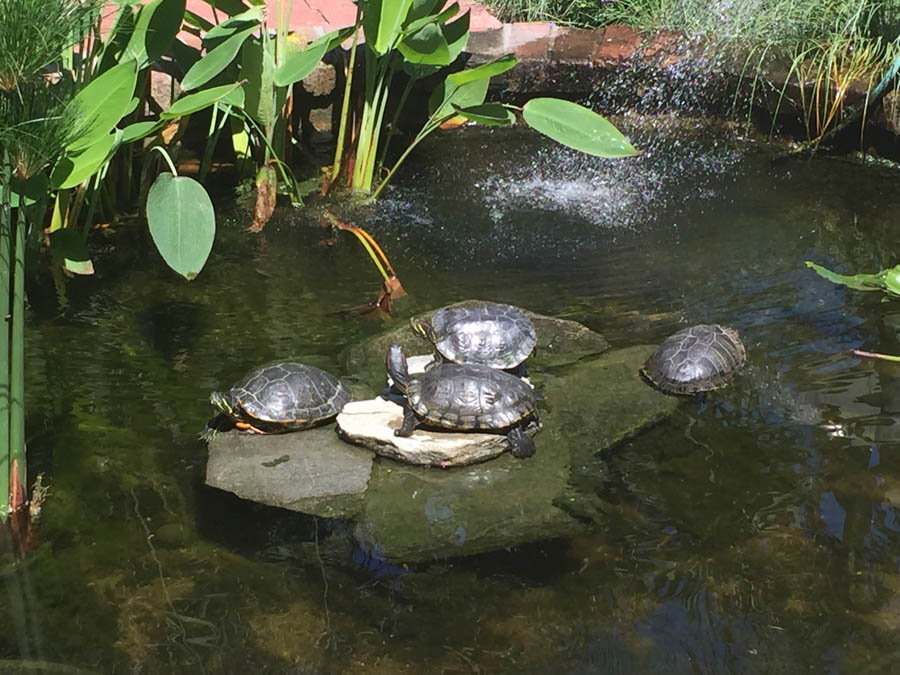
Came around to the other side to avoid the sun reflections
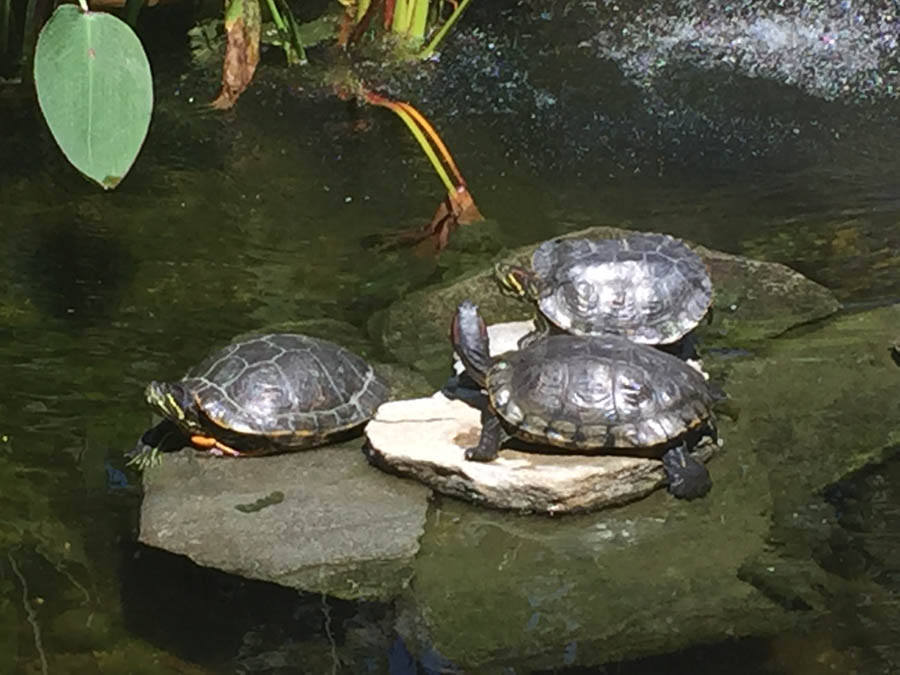
They were sunning themselves
Did You Know?
Turtles do not have teeth. They do, however have very sharp beaks and many can bite very well, teeth or not. The Snapping Turtle has been known to bite off fingers!
A turtle can live for 30 years or more, and some are thought to live as long as 100 years.
Most turtle keepers call a group of turtles a "herd," but the actual word for a herd of turtles is a "bale."
There is a kind of turtle called a Snake Neck that has a neck as long as its body is, and some turtles can fold their heads sideways into their shells so a predator can't bite them!
Some turtles can breathe underwater with their bottoms (cloacae), and most can drink with their skin.
Some turtles can live as long as a year without eating!
Sea turtles can travel thousands of miles across the oceans and still find their way back to lay their eggs on the exact beach where they were born.
Turtles live on every continent except Antarctica, in deserts, in forests, on mountains, in rivers, in the oceans, maybe even in your backyard.
A turtle's shell has up to 61 bones, which are part of its skeleton and attached to its backbone.
Turtles don't have ears, but they are very sensitive to vibrations. It is very hard to sneak up on a turtle!
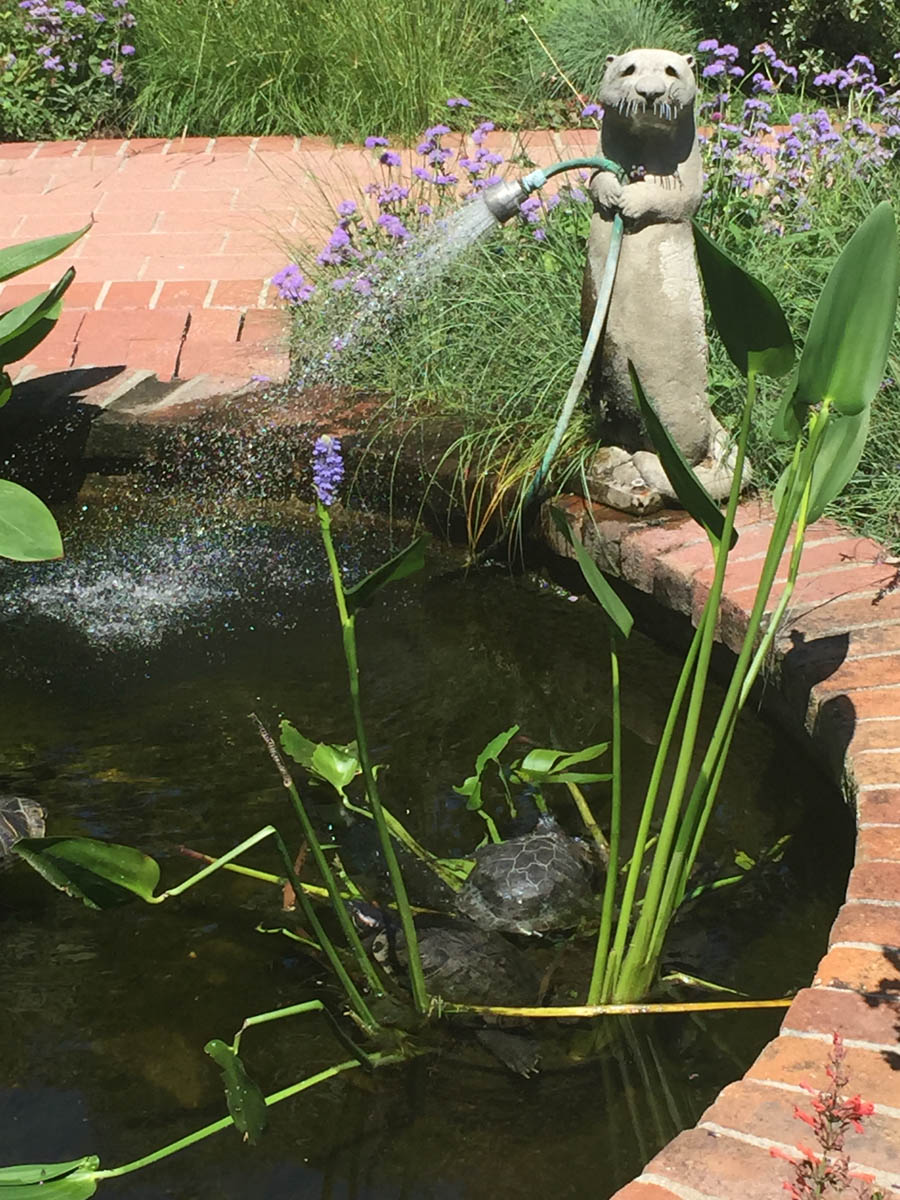
Their friends gives them a shower

Too hot, back into the water
Back To The Plants And Flowers

Waving goodbye we guess
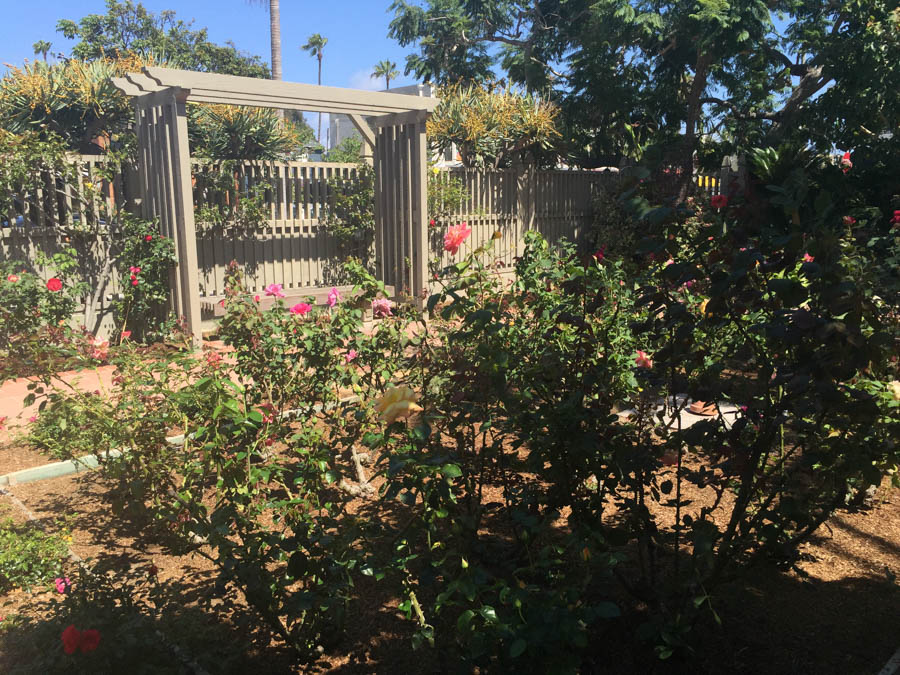
The roses are still blooming
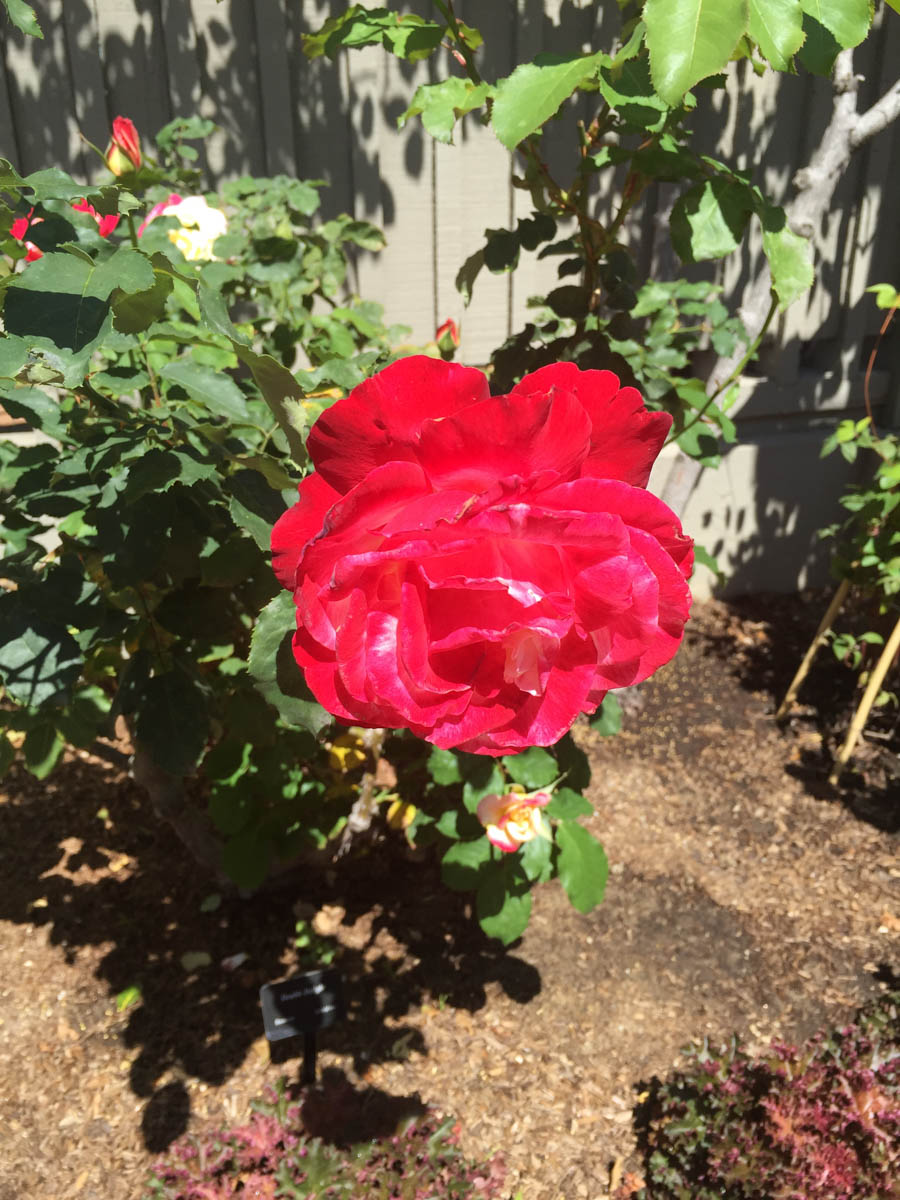
The sunlight was doing its job this afternoon
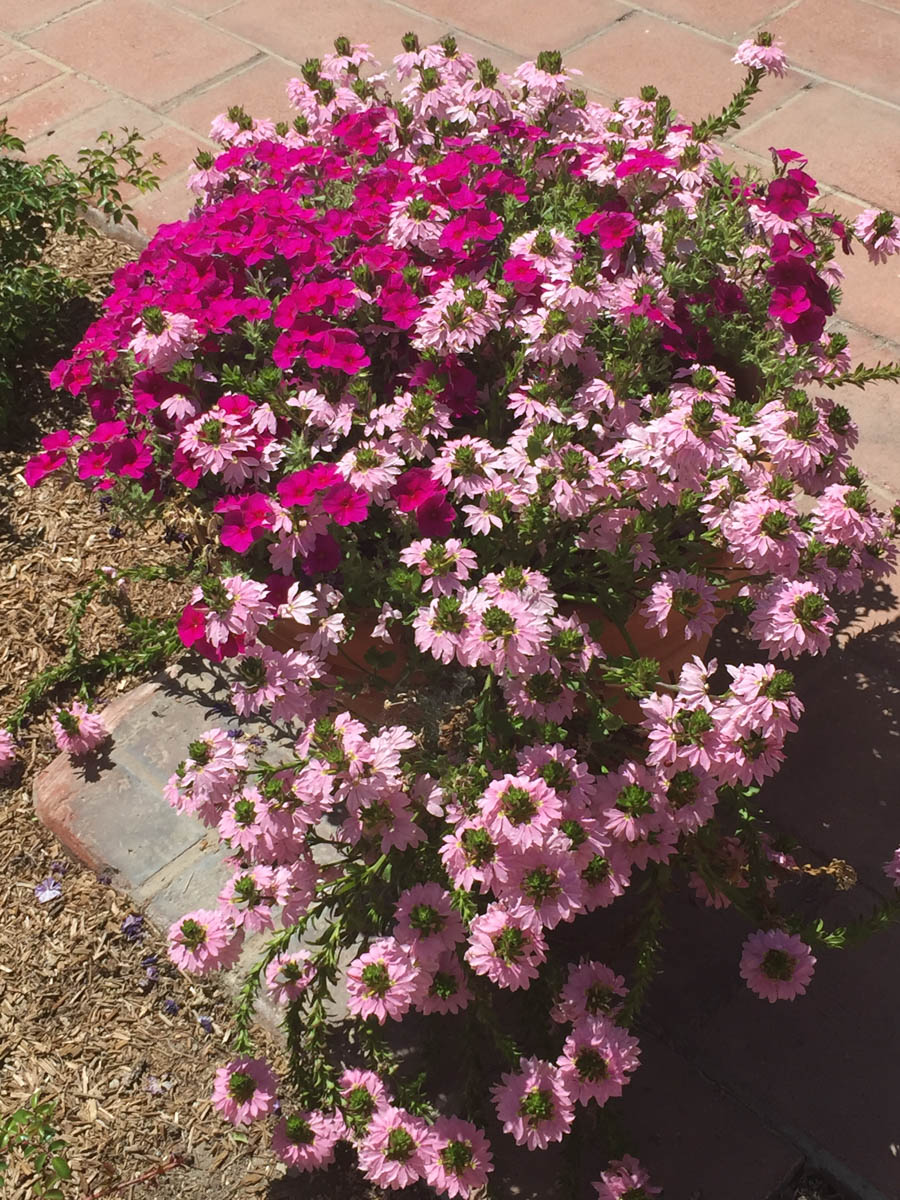
"Hello there... We are pretty also!"
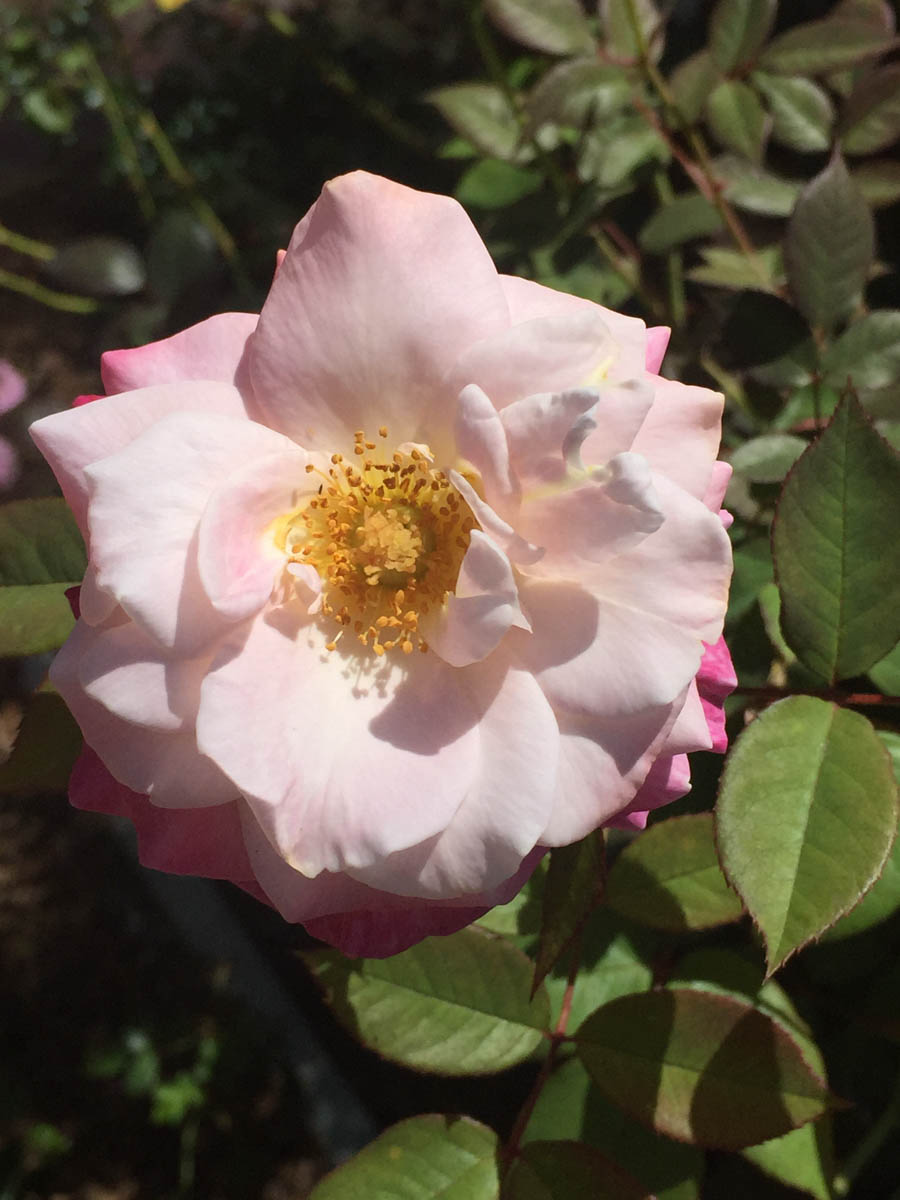
Reaching out for sunlight
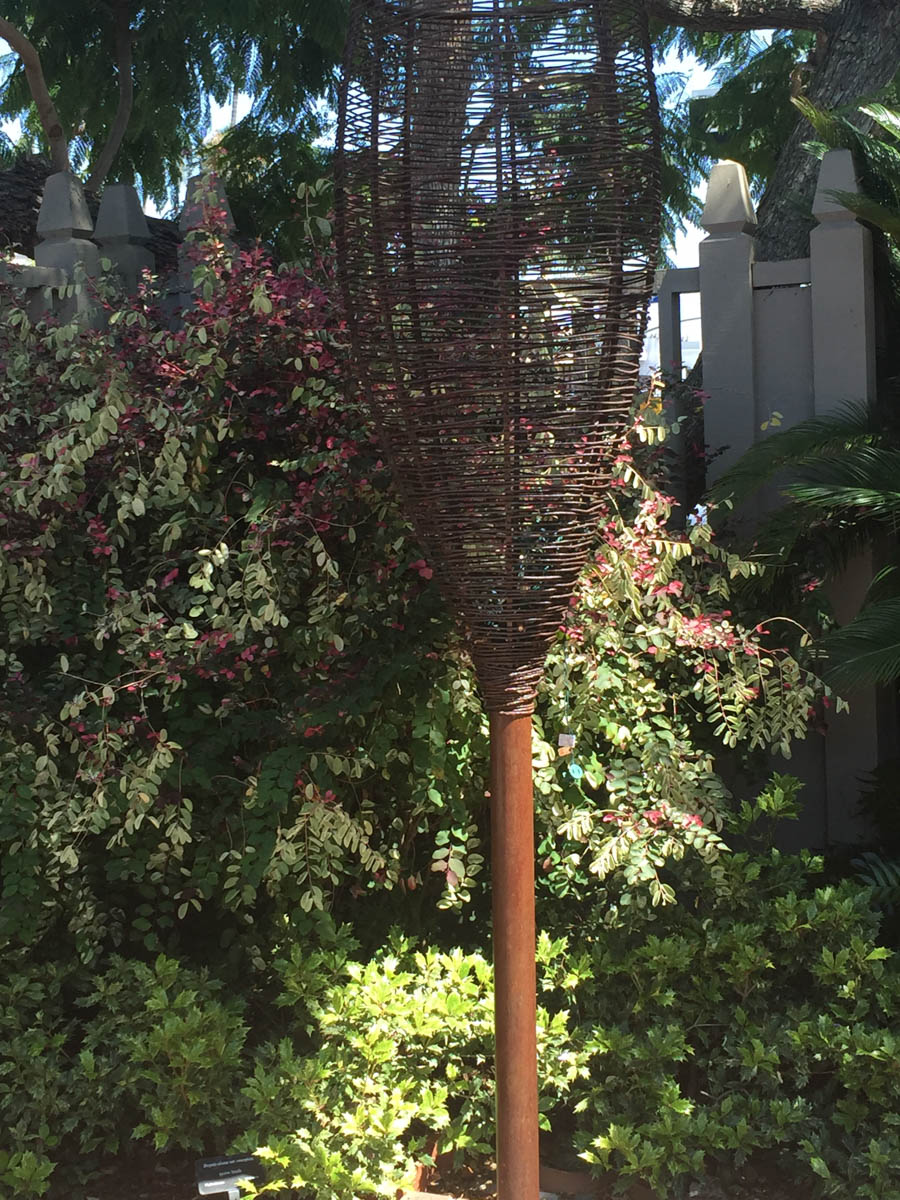
This sculpture was difficult to see... Looks like a wine glass
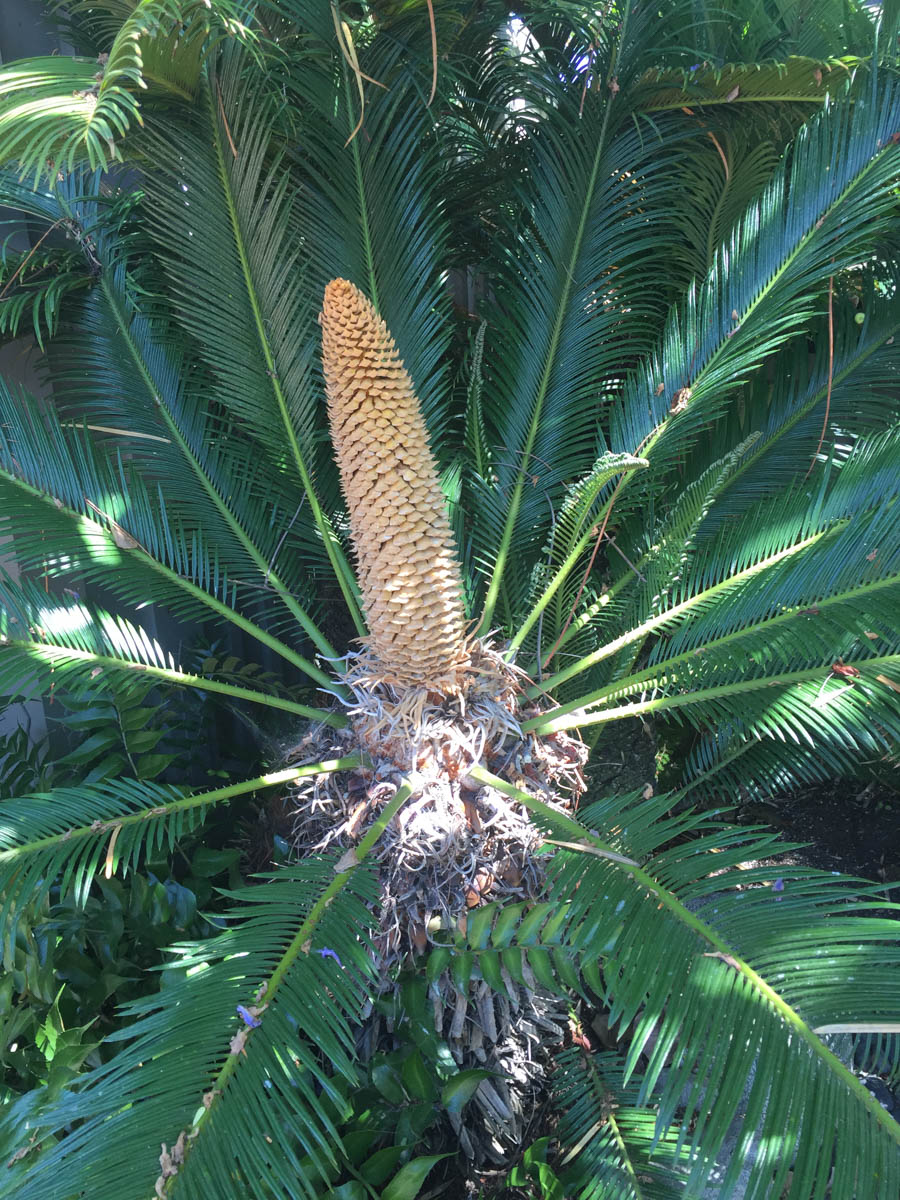
The palm was happy to see us?

Can't get over the amazing diverse colors in the rose family
Did You Know? - The rose is a legend in it's own. The story goes that during the Roman empire, there was an incredibly beautiful maiden named Rhodanthe. Her beauty drew many zealous suitors who pursued her relentlessly.
Exhausted by their pursuit, Rhodanthe was forced to take refuge from her suitors in the temple of her friend Diana.
Unfortunately, Diana became jealous. And when the suitors broke down her temple gates to get near their beloved Rhodanthe she also became angry, turning Rhodanthe into a rose and her suitors into thorns.

Kale was trimmed and looked quite pretty as an ornamental
Did You Know?
- There are over 50 varieties of kale, and there happens to be 50 Shades of Kale as well.
- There is an extremely tall variety of kale called "Jersey kale" or "cow cabbage".
-
America plants more acres in Kale than Brussels Sprouts.
- Kale might have saved people from starving in the UK during World War II because it's easy to grow and hearty.
- Lacinato Kale is known by many, many aliases including Cavolo nero (which means black cabbage in Italian), Tuscan Cabbage, Tuscan Kale, and dinosaur or dino kale.
- A kale plant continues to produce late into winter.
- After a frost, kale becomes sweeter.
- Ecocentric says that Thomas Jefferson was onto the kale craze way before us, he experimented with several varieties of kale at his garden in early 1800s.
- Kale is an amazing source of carotenoids, which are linked to one's level of optimism.
- Kale is grown around the world.
-
In Kenya, sautéed kale is called sukuma wiki and a staple of the diet.
Colcannon is a traditional Irish dish of kale and mashed potatoes.
Kale has been in cultivation for over 6000 years.

The rose garden was in a quiet shady spot

One more shot of the wine glass

The apple tree was doing pretty good...
No one had eaten this one.... yet
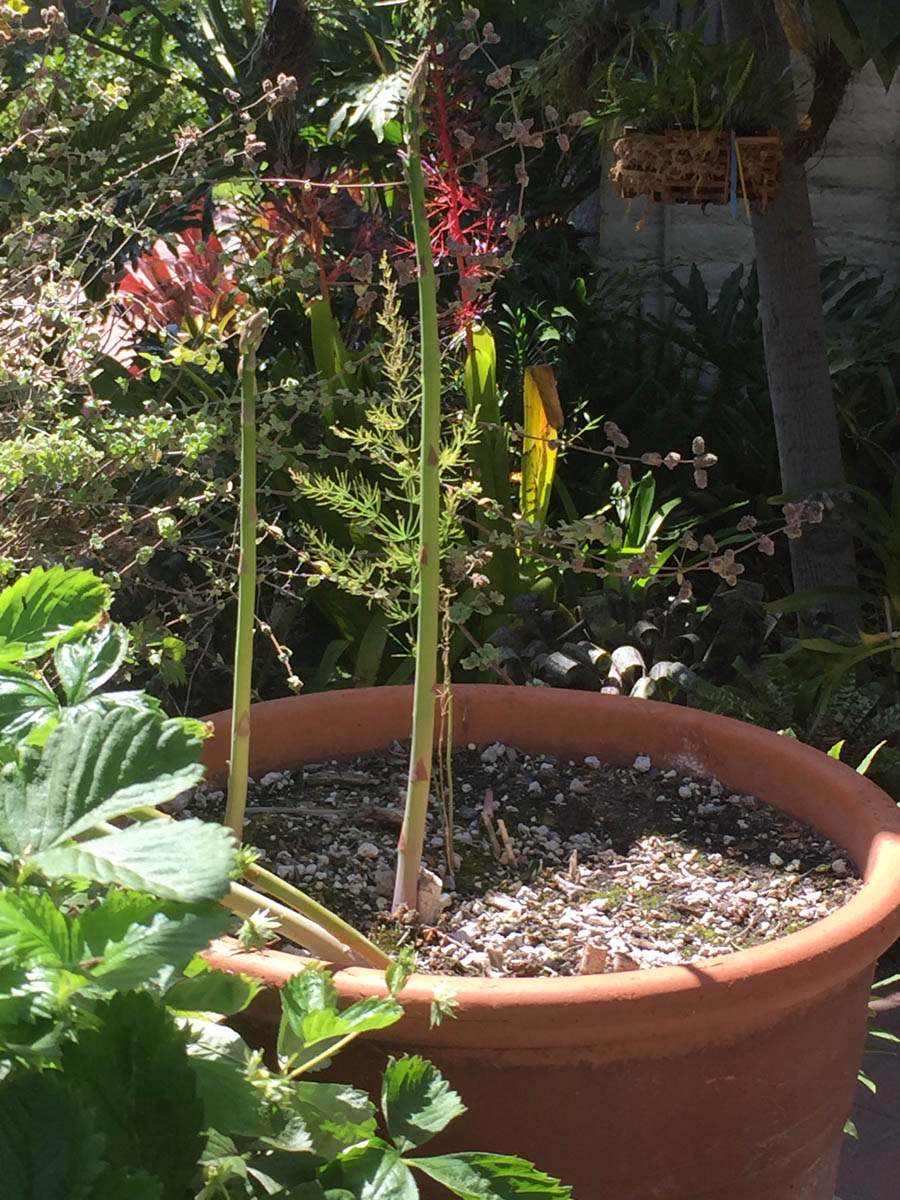
Oops! Up jump an asparagus
Did You Know? - California grows more than 50,000 tons of asparagus each year, which is about 70% of all the asparagus grown in the United States.
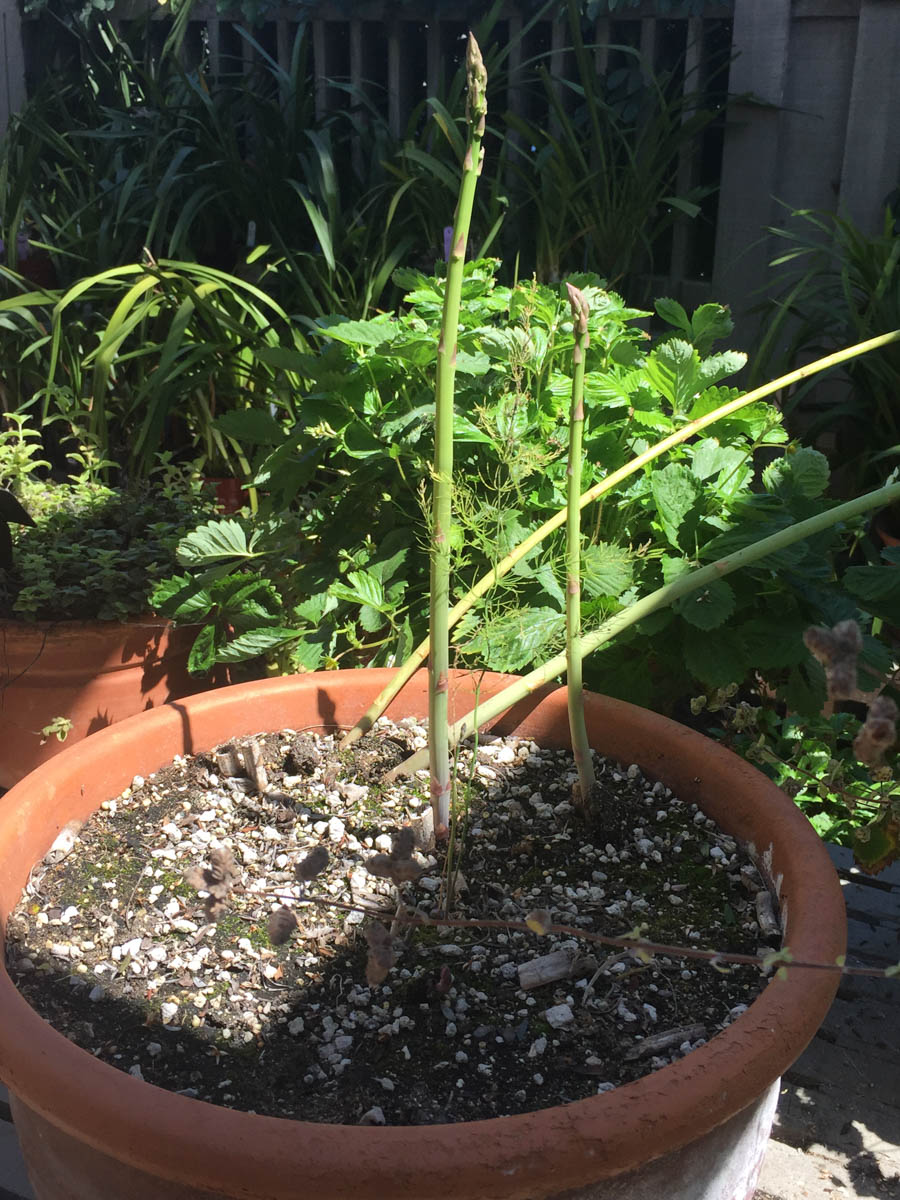
We have asparagus growing on your front yard
Did You Know?
Asparagus (Asparagus officinalis) is a member of the Lily family and is related to onions and garlic.
The asparagus spears grow from a crown that is planted about a foot deep in sandy soils. The spears are usually not harvested until the 3rd or 4th year, to allow the crown to develop a strong root system.
The plants will then produce spears for about 15 years. Under ideal conditions, an asparagus spear can grow 10" in a 24-hour period. Each crown will send spears up for about 6-7 weeks during the spring and early summer.
How often spears may be picked depends on the temperature. Early in the season, spears may be picked every 4 days or so, and later as the average temperature warms up, they may have to be picked every day!
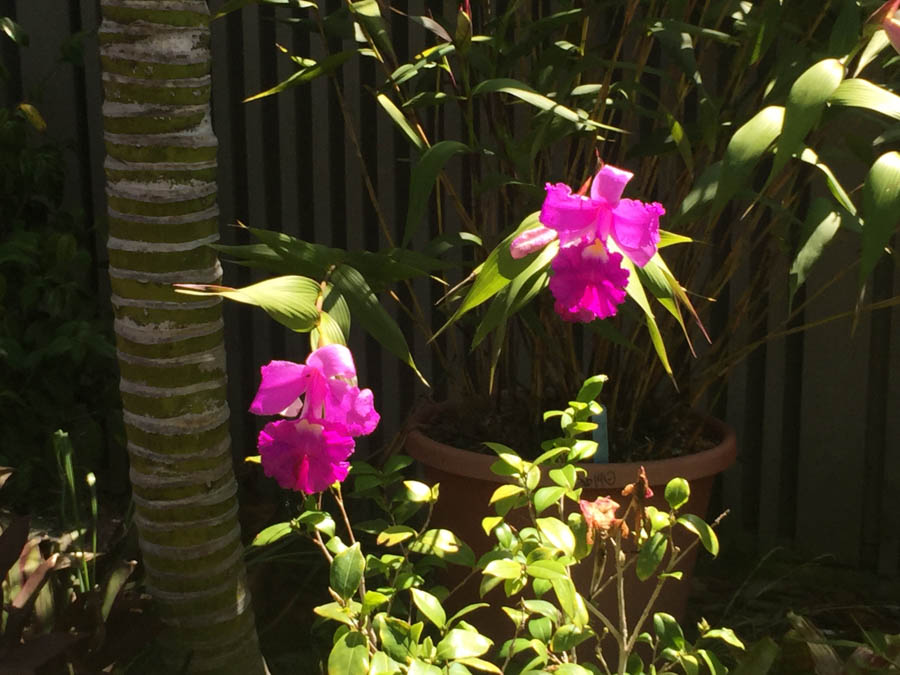
"Whoa there.... We are also quite pretty to look at"
We love FRESH flowers

We were not sure what this sculpture was
Into The Hot House (Tropical Conservatory)

Sue talks to the Carp

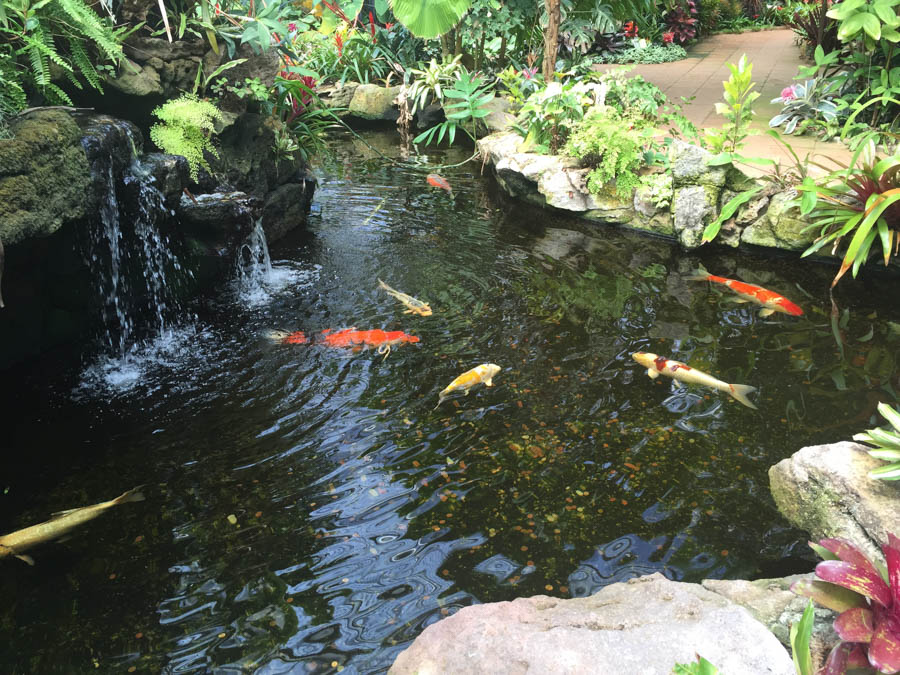
They were lazily swimming about this afternoon

The flowers seem to grow anywhere
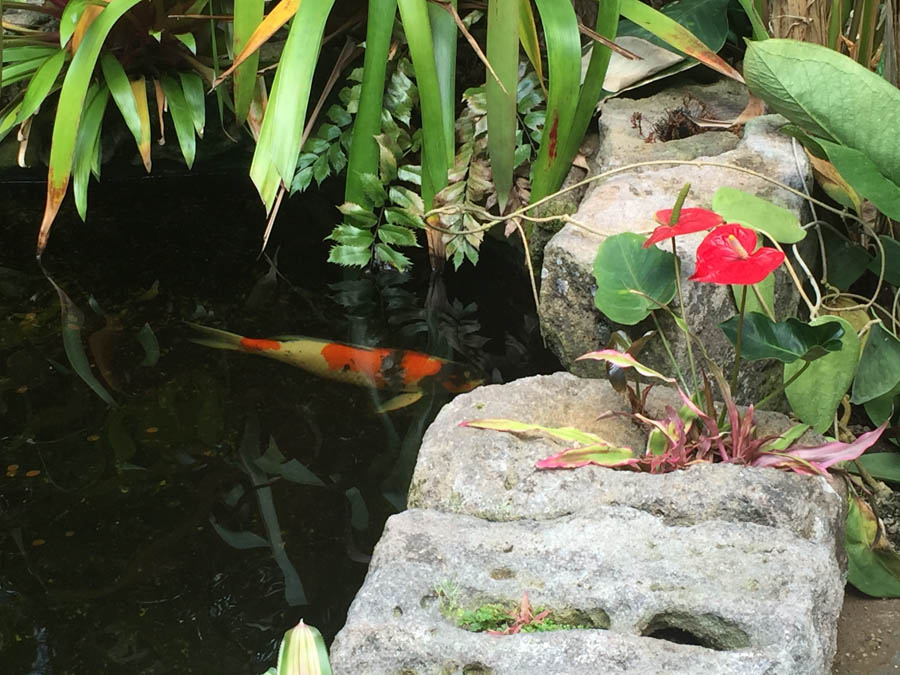
This fishy is really taking a nap
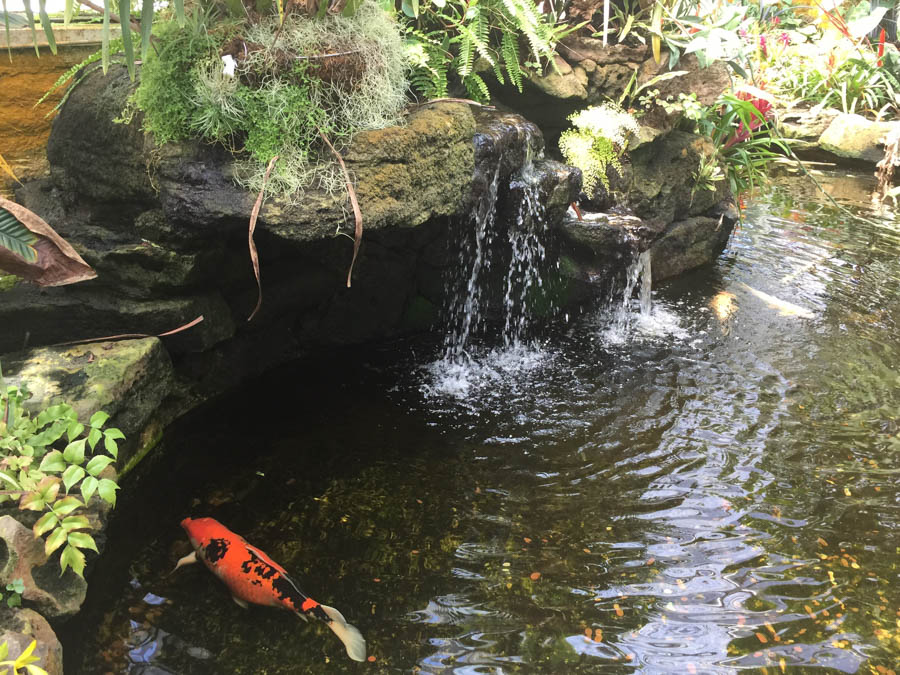
Going for a shower?

Must Visit The Orchids

The orchids are always amazing

So very delicate

Looks like they have teeth!

The colors are fascinating... Looks like an oil painter has been here recently

Do people still get corsages anymore?
Did You Know? - A corsage is a small bouquet of flowers worn on a woman's dress or worn around her wrist to a formal occasion, traditionally purchased by the woman's date. Corsages are now most commonly seen at prom or similar events.
Originally named after the French word for the bodice of a dress to which it was attached, they were originally thought to be lucky or ward off evil spirits
It has become a customary practice and a demonstration of affection from a date. It is thought that originally the gentleman would bring a gift of flowers for the parents of his date, and would select one flower to give to his date which would then be carried or attached to her clothing.

"Hello... I am Mr. Red!"
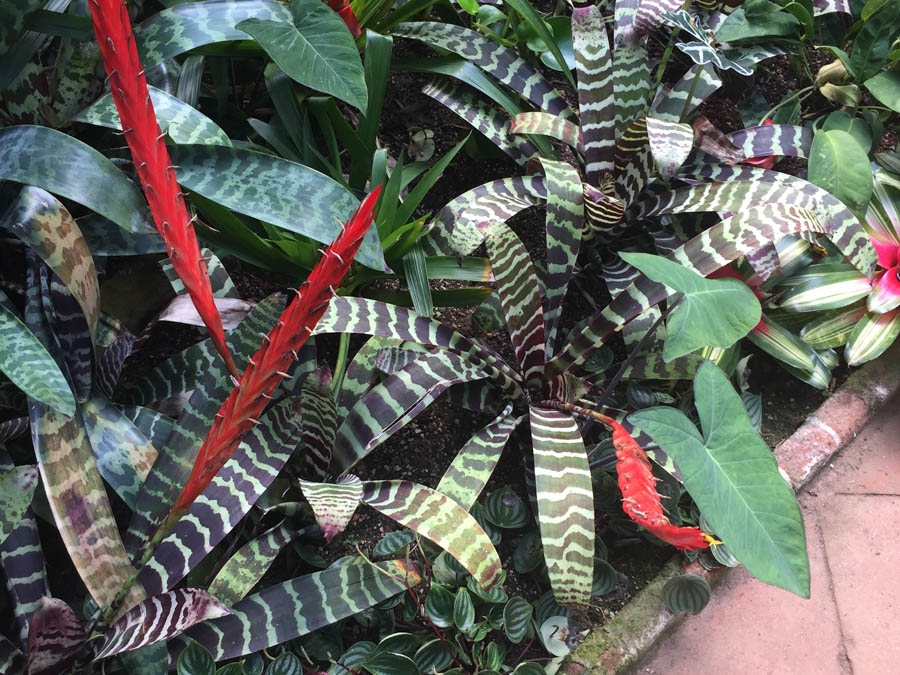
The red flowers with soft thorns were startling
Back Outside

Ferns just hanging around

The purple anthuriums were so bright in the sunlight

He is always here watching out over his garden
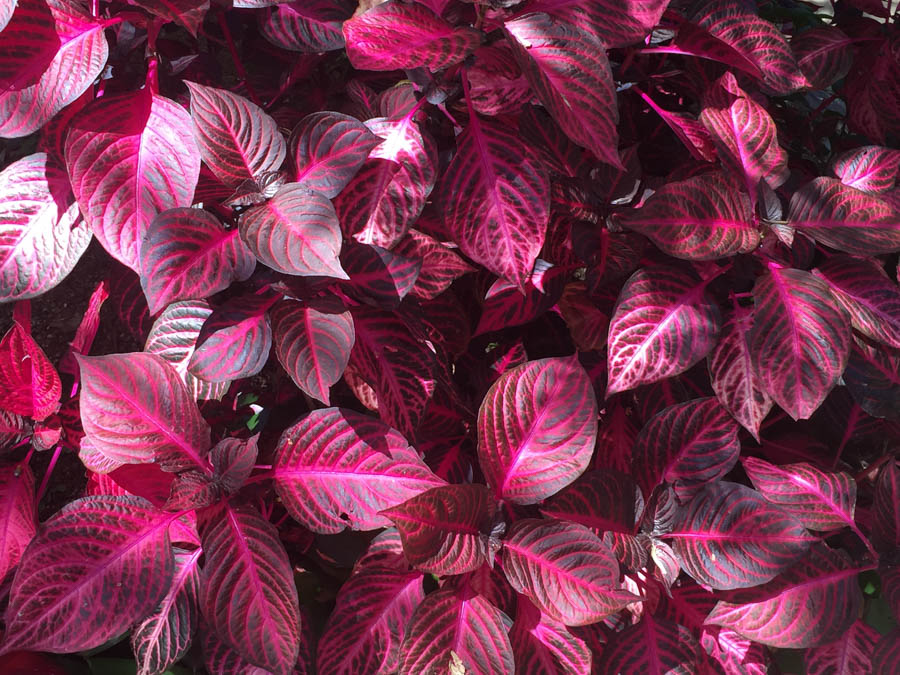
These guys grow like weeds

Shrimp plant
Did You Know? - Pachystachys lutea, known by the common names Lollipop Plant and Golden Shrimp Plant, is a subtropical, soft-stemmed evergreen shrub between 36 and 48 inches (90 and 120 cm) tall.
The zygomorphic, long-throated, short-lived white flowers emerge sequentially from overlapping bright yellow bracts on racemes that are produced throughout the warm months. It is a popular landscape plant in tropical and subtropical areas of the world.
They grow in almost any well-drained soil but, like most ornamentals, prefer a soil with an acid reaction. In this preferred medium they attain their maximum in leaf size and beautiful colouring.
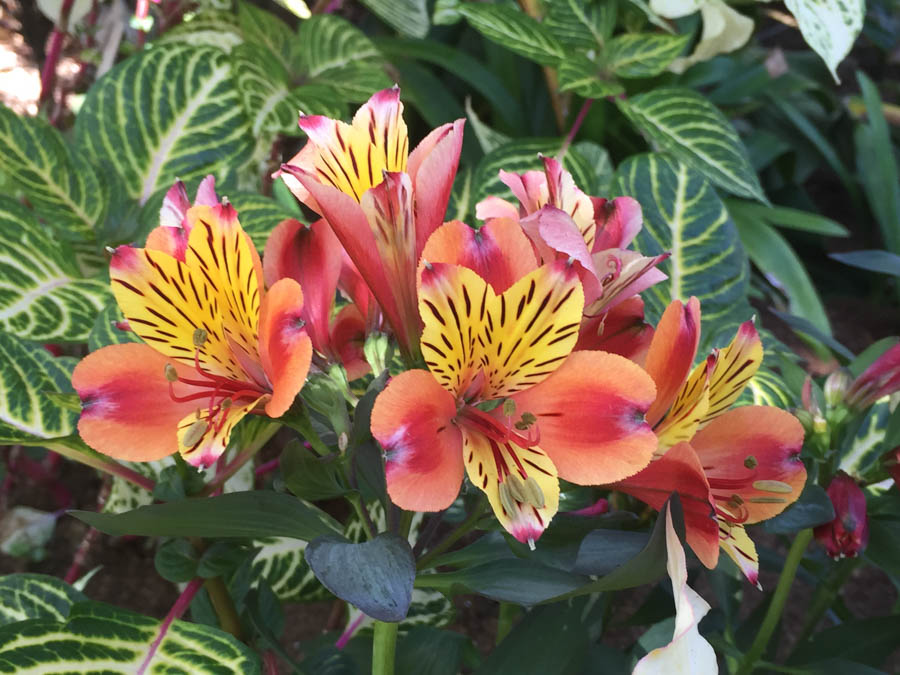
Must be a reason for the colors
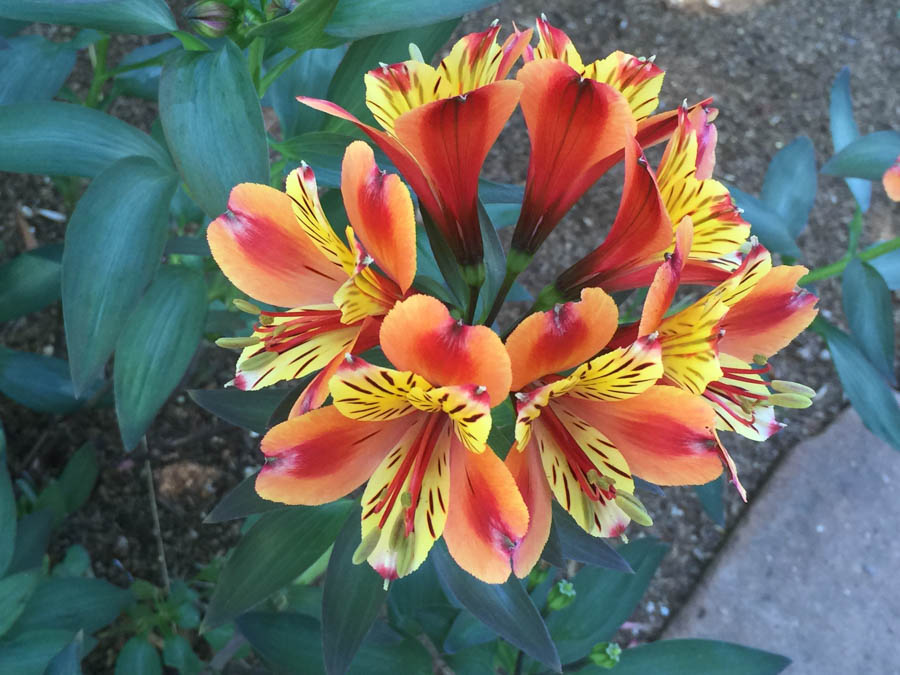
A perfect circle

View from the building into the rose garden
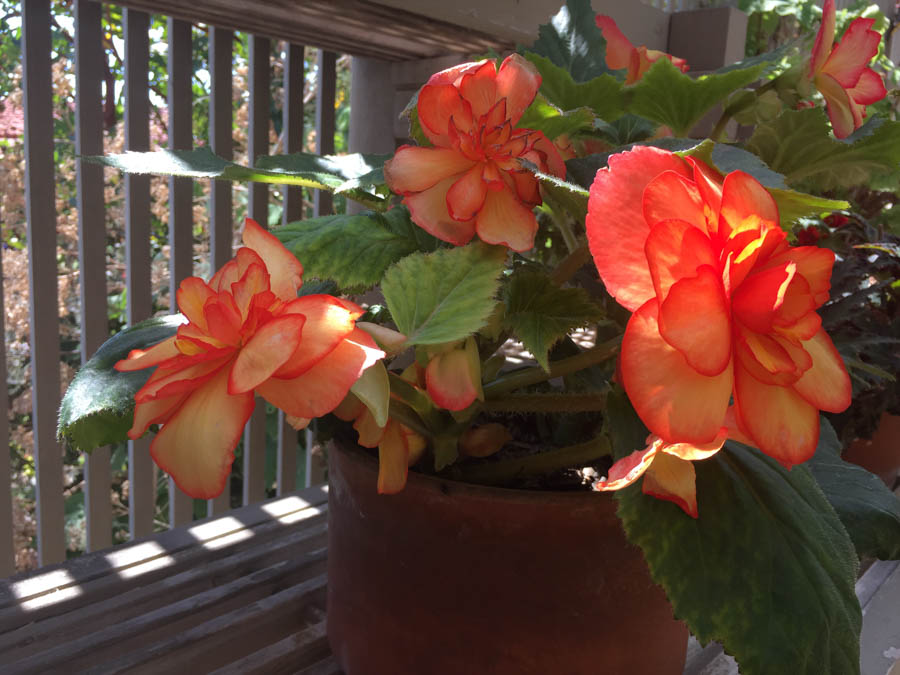
The leaves were almost transparent
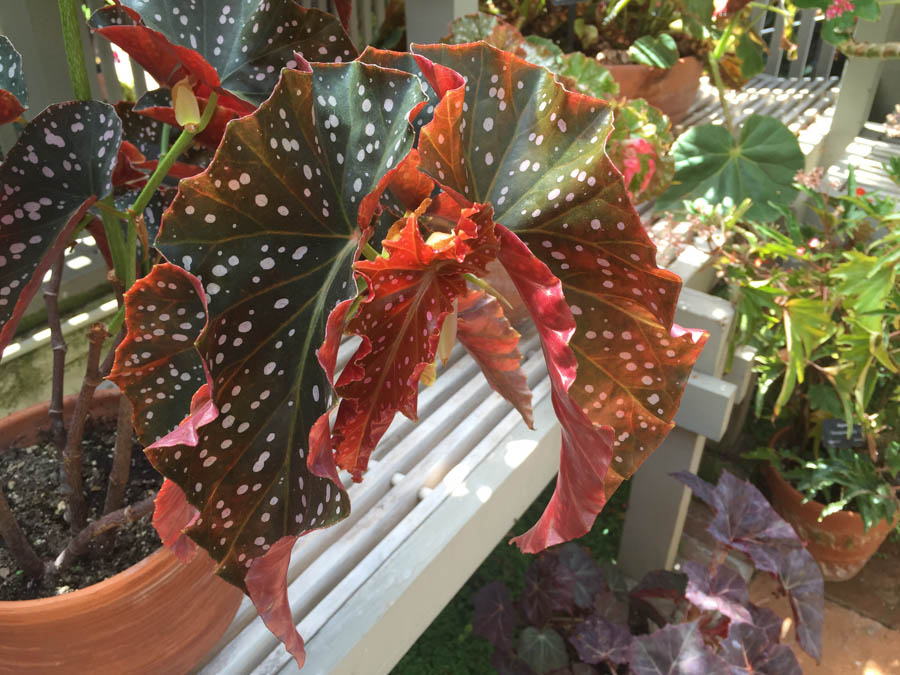
Freckles?
Did You Know? - Freckles, sometimes called ephelis, are clusters of concentrated melanin which are most often visible on people with a fair complexion. Freckles do not have an increased number of melanin-producing cells (melanocytes), but instead have cells that overproduce melanin granules changing the coloration of the skin (increased number of melanosomes).
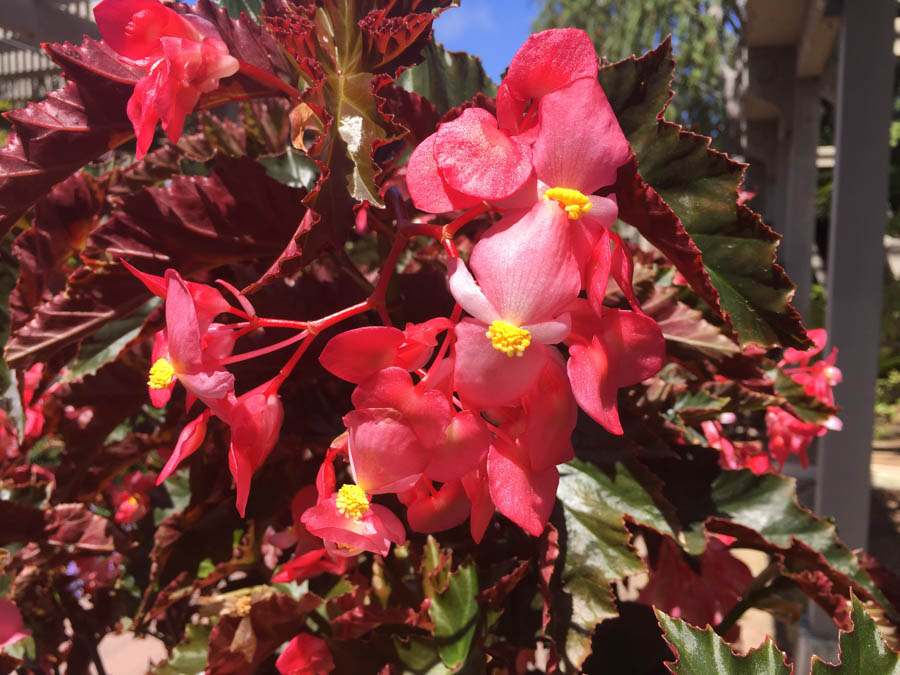
Makes your mind wonder away from the troubles in the world!

On our way out

We saw an old buzzard in the gardens today
